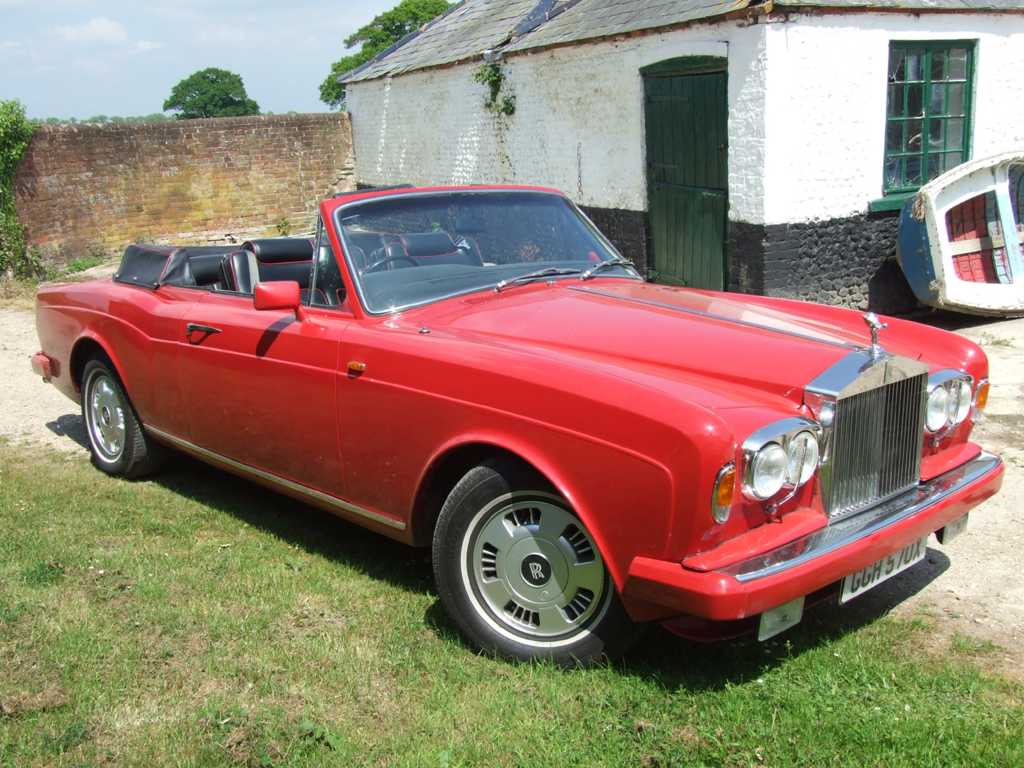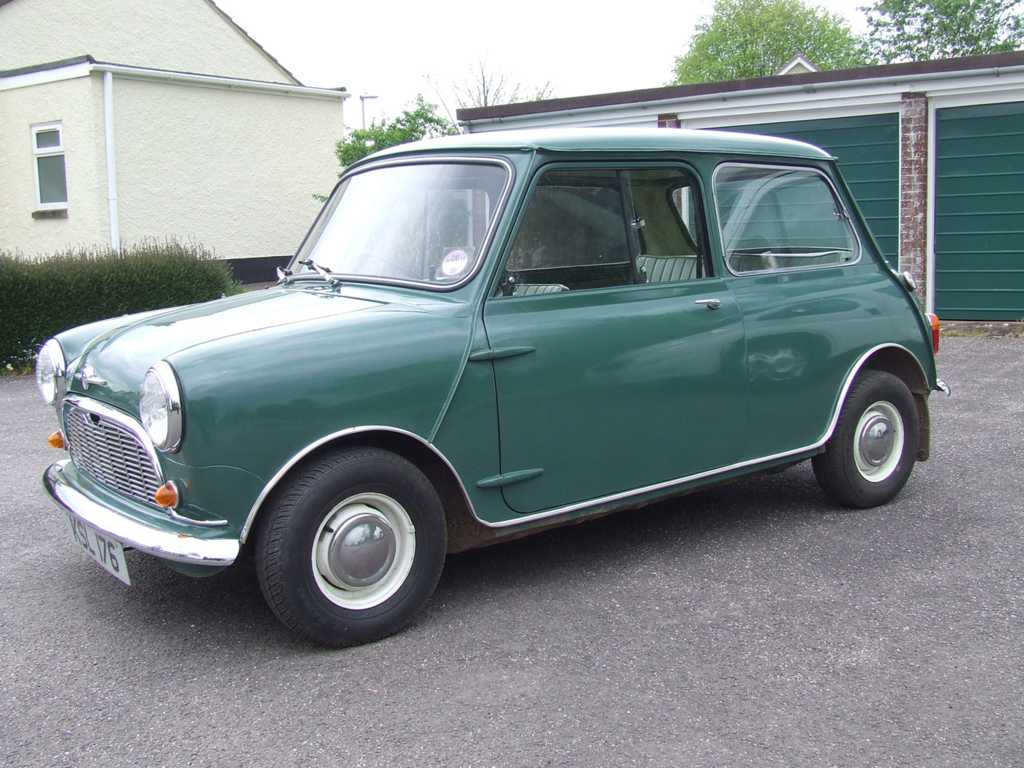July 18th 2010
Classics @ The Castle
Sherborne, DorsetThe Charterhouse 18th July auction of classic and vintage cars at Sherborne Castle, Dorset looks to be another great success for this Dorset company with many top marque motors up for auction.
“We have covered many miles across the West Country advising clients on their classic cars such as vendor of a fine Rolls Royce series II Corniche Convertible.” Commented Matthew Whitney. “And now it appears summer is now well and truly upon us, this Corniche Convertible looks resplendant in red with a black leather interior piped in red and with an automatic hood. Powered by a fuel injected V8 engine with ABS it is just one of 1226 of the series made and looks certain to be a perennial favourite with buyers.”
Whilst this beautiful Rolls Royce is in fine condition, the same vendor has also decided to sell his Mk VI Bentley, but with a difference. The original engine blew up and is now replaced with a Daf lorry 8 litre 6 cylinder diesel engine! The vendor reports a 0-60 second sprint time of about 5 seconds, but not much speed after that! With plenty of torque on offer, the car would make either an excellent towing car for vintage racers or it will appeal for someone looking for a project they can improve on.
Also entered is a 1925 Gardner Town Coupe which has been owned by the vendor for ten years, at £18,000-22,000. Some twelve years younger, is a rare 1937 Morris GPO engineers van which is believed to be just one of three in existence and is up for £8,000-10,000. In the post war section, there is a 1953 MG TD at £15,000-18,000, a 1963 Morris Minor Mini £1,500-2,000, a Triumph Stag £7,000-9,000, a 1974 Aston Martin V8 £18,000-22,000, and a Somerset Morris Minor which has spent the vast majority of its life in one garage at £4,000-5,000.
Charterhouse is now accepting further entries for this auction classic cars and motorbikes on Sunday 16th July. For further information regarding these sale, or to arrange a free home visit, please contact the Matthew Whitney, Head of Department at Charterhouse in Sherborne 01935 812277 or via email mw@charterhouse-auctions.co.uk
Rolls Royce Corniche Convertible £23,000-25,000
Bentley Mk VI diesel powered £6,000-8,000
Morris GPO engineers van £8,000-10,000
Morris Minor Mini £1,500-2,000
Sunday 18th July 2010Classic Cars, Motorcycles & AutomobiliaClassics @ The Castle, Sherborne DT9 5NRCatalogues are £10 on the door or £12 by post, and admit 2 people to the auction. Alternatively you are able to by a wristband which will allow entry to the auction for £5 per person, with no catalogue.
You will also need to buy tickets to gain entry to the show at the gate.
Venue, Sherborne Castle
View Larger MapWe anticipate this will be a very exciting sale, with a record number of vehicles consigned to sale at this stage.
The preview page will be updated regularly - please check!
Vehicles already consigned for the sale include: A 1970 Ford Escort 1300 Super, full service history, including original bill of sale £3,000 - 3,500
1951 Wolseley 1500 Black, for restoration with many spares
1966 MGB GT, dry storage for 40 plus years
A Trojan Toraktor, very rare tractor made between 1961-1964 and 1 of 500 made , estimate £1,500 - 2,000
A 1978 Triumph Bonneville 750 , estimate £2,200 - 2,500
1966 Austin Healey 3000 Mk III phase II, fully restored , estimate £28,000 - 30,000
A 1951 Jowett Javalin De-Lux, recent engine rebuild and it was featured in the film Viera Darke £4,500 - 5,000A 1975 Honda CB 400/four, lady owner, estimate £800 - 1,000
A 1948 Bentley Mk VI standard steel saloon, fitted with an 8 litre diesel engine "a wolf in sheep's clothing", estimate £6,000 - 8,000
A 1973 Bentley T1, one family owned from new, estimate £2,500 - 3,500
A 1980 Buick Le Sabre limited four door saloon, 23,300 miles from new with full service history, estimate £3,500 - 4,500
A 1997 Mercedes Benz 320 SL, full service history and panoramic hardtop, estimate £9,000 - 10,000
A 1953 MGTD, older restoration with bills for £14,000, estimate £15,000 - £18,000
A 1957 Morris Minor two door saloon, one family owned from new with the valuable registration number 4AYA, estimate £4,000 - 5,000
A 1989 Porche 911 Carrera Cabriolet, recent engine rebuild, new black carpets and electric mohair softtop, estimate £11,000 - 13,000
A 1982 Rolls Royce Corniche convertible, estimate £23,000 - 26,000
A rare 1939 Morris 8 Post Office Engineer 5 cwt light van, fully restored with photographic record, estimate £8,000 - 10,000
A 1925 Gardener town coupe with coach work by Brougham, estimate £18,000 - 22,000
A 1963 Morris Mini Minor, 37,500 miles from new, estimate £1,500 - 2,500
A 1974 Aston Martin V8 mark II, 44,000 miles from new, estimate £18,000 - £22,000
A 1953 MGTD, older restoration with bills for £14,000, estimate £15,000 - £18,000
A 1972 Triumph Stag, manual overdrive, full restoration, estimate £8,000 - £10,000
A 1974 Lotus Elan +2S130/5, rebuilt in 1998 with bills for £16,000, nominal mileage since, estimate £6,500 - 7,000
A 1973 Bentley T1, one family owned from new, estimate £2,500 - 3,500
 In 1958 the British company presents its new model Tornado Tornado Typhoon Sportbrake.
In 1958 the British company presents its new model Tornado Tornado Typhoon Sportbrake.












.JPG)


































